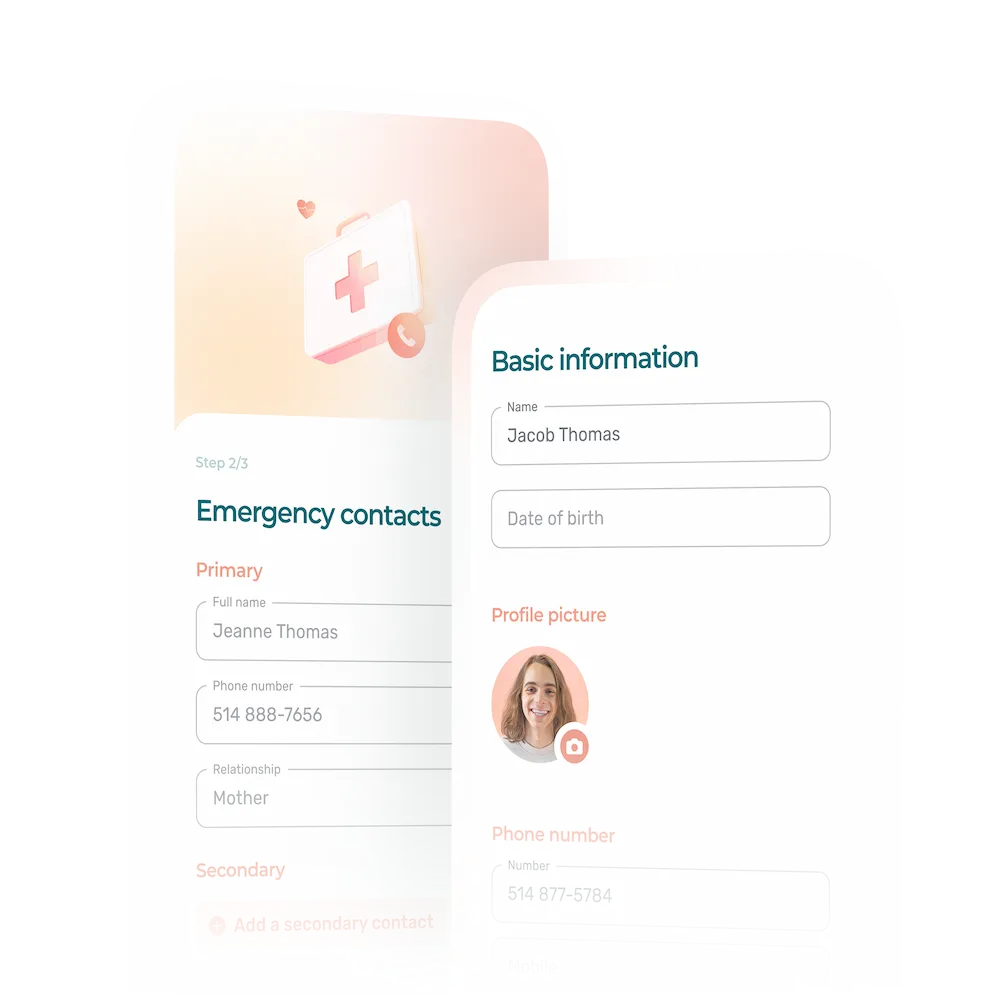Non-verbal communication plays a key role in our work relationships, adding an additional layer of information to the words we speak.
- The Role of Non-verbal Communication at Work
- Non-verbal Communication During Formal Meetings
- Body Language in Everyday Life
- Understanding Non-verbal Communication: A Strength for Managers
Most of us are aware of the non-verbal communication that takes place in our relationships with family and close friends. A longing look between lovers, a reassuring hug to a child or a secret handshake between friends are just a few quick examples.
But have you ever stopped to really notice the different features of non-verbal communication (or body language) in action at work? Read on for 11 examples to help you easily identify non-verbal cues in work situations.
The Role of Non-verbal Communication at Work
Clear and effective communication is key to smooth business operations. Some jobs, by their nature, require outstanding communication skills; customer service, sales, and management roles are ready examples.
Non-verbal communication naturally supports the words we utter, bolstering our communication with colleagues, bosses and teams.
When it comes to building strong relationships with peers, understanding other people’s body language—and being aware of your own—is an invaluable skill.
Non-verbal Communication During Formal Meetings
Formal meetings at work are a goldmine for observing non-verbal communication. Non-verbal cues can demonstrate positive elements such as trust and sharing. Other signs can help us identify conflicts.
Following are various examples of more formal meetings and the non-verbal language to which they often give rise.
Annual Performance Evaluations
Those annual performance evaluations sure can be stressful, even for your highest-performing employees! Performance evaluations are a time to look back on achievements, conflicts and performance objectives, as well as ways to move forward and improve, among other things. They tend to have a strong emotional charge, since all these aspects have repercussions on pay and they often include some discussion around salary increases.
1. Notice Non-verbal Communication When Giving Feedback
Scan your employee’s face during the annual performance evaluation and more specifically when you’re giving positive or negative feedback. You may catch your employee lighting up when talking about an achievement, frowning when discussing a mistake, or even twitching their lip after receiving critical feedback.
2. Spot Differences When Sharing News
For managers, sharing news, whether good or bad, comes with the territory. This is also true for customer service employees (flashback to when I was a waitress and had to tell a customer that the meal they had ordered was no longer available!). 😬
If you have good news such as a promotion to announce, enjoy analyzing your employee’s reaction. Their body language may convey their joy and appreciation well before they utter a single word. Be on the lookout for a smile, wide-eyed expression or excited tone of voice.
When sharing more negative news such as a cut in work hours—or worse, for instance, suspension without pay—expect your employee to have a very different non-verbal response. You might be greeted by a pause while your employee takes in the news. Before they pronounce a word, they’re likely to sigh, briefly close their eyes, cover their eyes with their hand, or shake their head.
Be responsive and make sure you take these things into account. It might help to say something or even take a break to get some air before resuming a more difficult conversation.
Job Interviews
Whether you’re a manager or an HR specialist, the job interview is a crucial step in the recruitment process. It is generally one of the first instances of face-to-face contact with the future employee. This happens to be one of my favorite times to observe non-verbal communication at work.
There’s a charm offensive underway on both sides: the employer is trying to generate interest in the position while the candidate wants to be recognized for their professional value. In addition, stronger reactions are all but certain given the nervousness of the two parties.
3. Analyze the Handshake and Surrounding Elements
There’s nothing quite like a handshake, is there? It is such a hallmark of workplace culture in the Western world, during both greetings and introductions. Not to mention that it’s one of the first instances of body language to observe during a job interview.
Without getting into a lengthy repertoire, a handshake can be soft or firm, short or long… and sweaty, in some cases! Also pay attention to the candidate’s eyes. Is the candidate confidently looking you in the eye during the handshake or uncomfortably staring down at the floor?
4. Try to Catch Looks and Facial Expressions
Your candidate is now seated before you and you’re firing off your list of questions. Where is the candidate looking? Are they analyzing their surroundings? Are they making eye contact or taking a sudden interest in the floor? Are they sweating, or have they perhaps turned beet-red? 🥵
Tip for the manager: Analyze all of these things and adjust the conversation accordingly. If the candidate seems uncomfortable, try to create a more relaxed atmosphere where they will feel more comfortable answering your questions. After all, the goal here is to get to know them and see if the fit is good. A pleasant conversation will be a win-win for both parties!
One-On-One Meetings
Regularly holding one-on-one meetings is a fantastic way to get to know your team members. These conversations have benefits that go far beyond a tightly knit team, enabling you to rally your employees, spot issues before they flare up, and show your team recognition.
A one-on-one is a special time where you can develop a relationship of trust between two human beings, rather than between a manager and their employee.
5. Spot Tired or Unmotivated Employees
A one-on-one is an extraordinary opportunity for you to spend some time alone with your employee. It’s the perfect occasion to check in and see if they might be struggling or demotivated.
As you talk, be attentive to your employee’s voice, eyes and posture. Is their tone of voice cheerful or monotonous? What about their gaze? Are they making eye contact, are their eyes darting around, or do they look bored or even irritated (rolling their eyes)? Finally, what does their posture tell you—are they interested and leaning toward you? Or slinking back in their chair with their arms crossed?
Tip for the manager: Seize on these elements to nourish and guide the conversation. Don’t be afraid to adjust, and remember that a one-on-one is all about strengthening the bond between you and your employees.
6. Identify Their Level of Comfort or Stress
A one-on-one should not normally stress out your employees. That being said, new hires or less experienced employees might well be a little more tense. The same goes for an employee returning from sick or parental leave.
Start with some chitchat about the employee’s life so they can share a point of pride or any personal issues. Again, take in their voice, posture and eyes. While you’re at it, why not also check out their hand gesture?
A stressed employee will tend to talk faster, have a rapidly shifting gaze and exhibit a tense posture. Small, jerky hand movements and clenched fists are also clear indicators of nervousness.
Team Meetings
Whatever your industry, there are always key moments—whether it’s a meeting to rally everyone together before your store opens for the day, a conversation to introduce your restaurant’s seasonal menu, or a talk to discuss a new procedure at work—that will give you a read on employee relationships.
Notice all the interactions, parties to the conversation, and reactions. Who is asking the questions? Who seems uninterested? Who seems irritated and why? Is there a palpable chill between some employees?
7. Detect Looks and What They Mean
Observe where your employees are looking during team meetings. Are they paying attention to the person speaking, or glued to their cell phones? Worse still, do you see them rolling their eyes when certain individuals speak up, or do you see two employees exchanging icy looks?
Tip for the manager: These clues should alert you to certain shortcomings or conflicts that need to be addressed. Why not take the time to meet with these employees individually and try to resolve the conflict?
8. Interpret the Voice
In addition to eye contact and physical gestures, there are several other non-verbal cues that are worth noting during your team meetings. One of them is people’s voice. Voice intonation, rhythm and volume all vary according to the state of the person speaking.
Someone confident will speak at a steady pace and probably loud enough for everyone to hear, while making broad movements and maintaining a gaze that denotes that they’re fully present.
Conversely, someone who feels awkward will tend to speak more quietly, at an unsteady pace. Their gaze will be more evasive and they may show their uneasiness through clenched fists or a tense posture.
Tip for the manager: If you see signs of disconnect, discomfort or conflict, a team-building activity might help bring everyone together! 🛝
Body Language in Everyday Life
As you may have guessed, our day-to-day lives also offer insight into non-verbal communication at work. From people’s informal exchanges to their use of space, their inner state can be decoded by a careful observer.
Informal Exchanges
Casual conversations are common at work, from staff room chats to lunch break and locker room talk.
When you observe a chat between two colleagues, their body language will tend to signal their respective interest and friendly relationship.
9. Notice Empathy, Agreement and Friendship
It isn’t uncommon for co-workers to develop close bonds amongst themselves, or even friendships that last long after a professional relationship has ended.
These friendships can be easily spotted based on body language, for example, one colleague touching another’s arm or shoulder empathetically, two employees warmly shaking hands after not seeing each other for a while, or a cluster of employees bursting into laughter over photos of funny moments with their children.
Nodding your head and pointing your feet toward the other person display rootedness and interest in the conversation. When someone is leaning away lazily or their feet are pointed away from the other person, their body language is suggesting disinterest and a desire to leave the conversation.
Use of Space
Most teams are made up of a mix of people with different personalities, backgrounds and levels of expertise. In spite of this diversity, strong bonds are still formed between team members, often regardless of their hierarchy.
Although more subtle than hand gesture, voice and eyes, people’s use of space is interesting to analyze for those who are able to decode it. It can be easily studied in everyday life.
10. Notice How Staff Use Their Workstation
The way employees use space also says a lot about your team. Everyone has their own “bubble,” their threshold of tolerance to physical closeness to other people, which will vary according to the relationship, trust and friendship at hand.
A newly hired team leader may be more reserved and stand back a bit when observing how things are done at a given workstation. Conversely, a senior employee who is familiar with the tasks will use that same workstation with ease.
11. Avoid a Poor Use of Space
Imagine that to get to work, you have to share an elevator ride with an employee. The ride up isn’t very long, maybe 5 minutes in all, yet you keep your eyes on your cell phone and pay no attention to them.
This is an example of poor use of space by a manager. In fact, this example includes several features of non-verbal communication that signal disinterest in an employee.
As a manager, is it acceptable to ignore a member of your team? To fail to even look up in greeting or prompt a smile? 🫠
Be watchful of your use of space and your non-verbal communication. They will impact not only your relationship with your employees, but also the performance of your team.
After all, why should employees show interest in their employer and give it their all if they feel they are getting no recognition from them?
Understanding Non-verbal Communication: A Strength for Managers
Although we have only just scratched the surface of this topic with a handful of examples, it goes without saying that, at the very least, any manager worth their salt should be able to read and decipher the non-verbal language of their immediate team. Being able to identify a person who’s distressed or overwhelmed—or on the contrary someone bored who is craving greater responsibility—is a priceless asset.
Moreover, developing this soft skill, which is part of emotional intelligence, allows managers to avoid conflicts as well as resolve them before they get out of hand.


- The Role of Non-verbal Communication at Work
- Non-verbal Communication During Formal Meetings
- Body Language in Everyday Life
- Understanding Non-verbal Communication: A Strength for Managers







